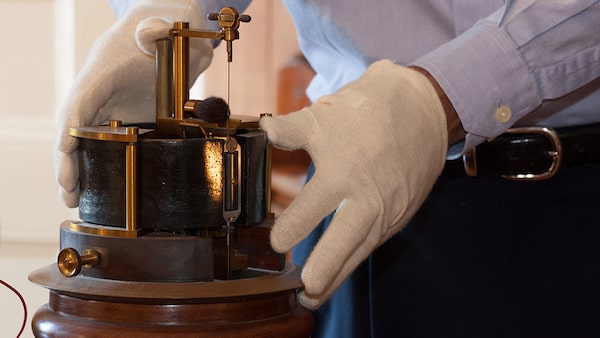
The port at the Newman Wine Vaults has been legendary for 300 years.SUPPLIED
If you visit Newfoundland and Labrador you can be sure of one thing: you’ll see interesting people, places and things that you won’t find anywhere else. Many of the province’s most unique sites have even more fascinating histories, including:
Newman Wine Vaults
If you’re looking for the perfect-tasting port wine, these cellars on Water Street in St. John’s have been the place to go for 300 years. Legend has it that in 1679, a ship owned by Newman & Company was sailing for London from Portugal but got driven far off course and ended up in St. John’s for the winter. When the vessel got back to England the next spring, the port was noticeably improved. The Newman Wine Vaults were used to age port to the end of the 1800s, possibly into the 20th century. Today, they’re a popular attraction for port-lovers.
Heart’s Content Cable Station
Newfoundland and Labrador’s status as a communications hub was established decades before Guglielmo Marconi received the first wireless signal in 1901 on Signal Hill. At Heart’s Content Cable Station in July 1866, the first permanent telegraph cable connecting Europe and North America was hauled ashore, connecting two hemispheres.

At Heart’s Content Cable Station, the first permanent telegraph cable connected two hemispheres.SUPPLIED
Gander International Lounge
The sleek, modernist Gander International Airport Lounge is a feast for the eyes, emblematic of how glamorous air travel use to be. But it’s also got stories to tell. When planes were rerouted after the tragic events of 9/11, more than 7000 passengers ended up stuck in Gander for up to five days. Local community members embraced the stranded travellers with food, lodging and friendship, a tale made famous in the smash hit musical Come From Away.

Gander International Airport Lounge is a fine example of the glamour of mid-century air travel.SUPPLIED
French Shore Tapestry
From the 1500s to the early 20th century, French fishermen crossed the North Atlantic to fish cod along the so-called French Shore of Newfoundland, infusing their culture into the language, music and place-names of the area. The stunning French Shore Tapestry, on display at the French Shore Interpretation Centre in Conche, is a 227-foot work of art that tells the story of these people. It was designed by French-Newfoundland artist Jean-Claude Roy and embroidered by local women in the traditional style of the Bayeux Tapestry.
Advertising feature produced by Globe Content Studio with Newfoundland and Labrador Tourism. The Globe’s editorial department was not involved.